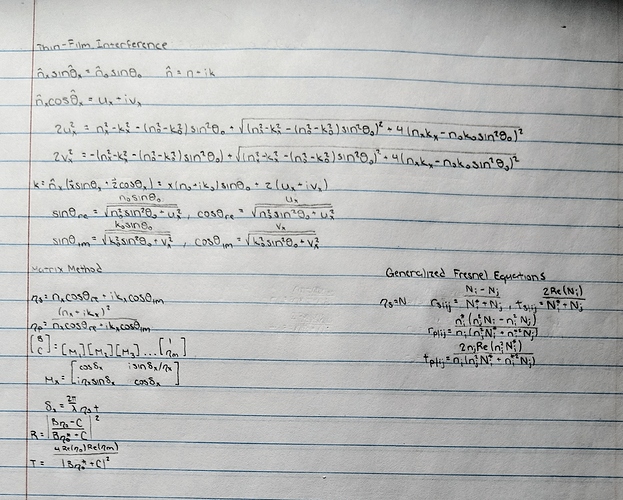I have not yet been able to finish typing up a digital version of the equations with explanations of the math behind it, but if you’d like a head start at looking through the equations I used, here are the necessary notes:
The way I understand it, a refractive index describes the speed of light in a given medium relative to the speed of light in a vacuum. The change in speed as light crosses the boundary causes the light to refract. When a material is conductive, light is not just refracted but also absorbed as it propagates through the material. The strength of the absorption of light is described by the imaginary part of the IOR. When a material does not absorb light (is not a conductor), the imaginary part is simply 0.
I’m not exactly sure what you mean by “wrapped around”.
A while ago, I actually implemented a node group to convert wavelength to color (it uses the same color matching formulas described in the NVidia article that @troy_s linked) which does the matrix multiplication using the vector math node:
It would really depend on the refractive indices you use. For an idea of what to use to match the car, it looks like it uses a thin-film stack of chromium (1st layer), magnesium fluoride (2nd layer), and aluminum (substrate).
